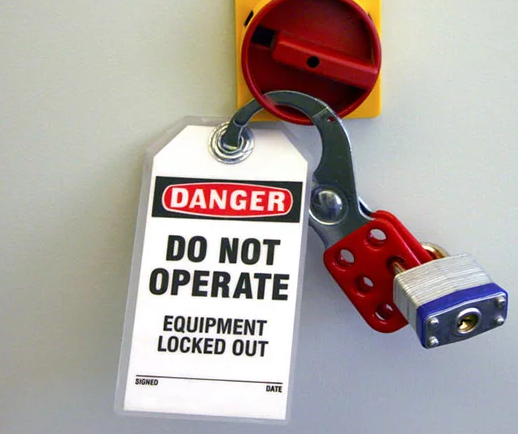California's "Be a Manager, Go to Jail" Law
One of California's numerous special environmental, health and wellness (EH&S) laws is its "Corporate Criminal Liability Act (CCLA)." CCLA offers greatly expanded prospective personal criminal liabilities for infractions by managers, so is often described as the "Be a Manager, Go to Jail" law. Enacted in 1990, CCLA draws both from occupational safety and item liability laws, to provide sweeping requirements for corporations and managers to ease off or warn exposed people (including employees) about a broad variety of major concealed threats happening in a broad variety of circumstances, consisting of both workplaces and items. Although this law has been used by district attorneys and advocates to strike worry into the hearts of business managers, there have actually been couple of reported cases in its nearly three years on the books.

Specifying Terms
CCLA applies to a "supervisor with real knowledge of a severe hidden risk."
(California Penal Code area 387). It provides (broad) definitions for each of these crucial terms. First, the act applies to managers, who are specified as follows:
Manager suggests an individual having both:
Management authority in or as a service entity [defined to include corporations and limited liability entities]
Substantial duty for any aspect of an organization that includes actual authority for the security of a product or service practice, or for the conduct of research study or screening in connection with a product or business practice.

Product is defined broadly as "an article of trade or commerce or other product of product which is a concrete or an intangible excellent, and consists of services."
Compliance requirements and potential liability are triggered by "actual knowledge of a severe concealed danger," which are specified as follows:
Serious hidden risk, used with respect to a product or company practice, indicates that the normal or foreseeable usage of, or the direct exposure of a specific to, the product or business practice produces a significant probability of death, fantastic physical harm, or serious direct exposure to a specific, and the threat is not readily apparent to an individual who is most likely to be exposed.
Actual knowledge, used with regard to a major concealed danger, implies info about the manager and circumstances that would convince a reasonable person that the major hidden threat exists.
Real knowledge of a serious hidden threat sets off a duty either to abate the threat, or to caution affected individuals (e.g., staff members or consumers) and inform California's Division of Occupational Safety and Health (Cal/OSHA). The reduction or disclosures need to be achieved within 15 days after the real understanding is obtained, except that they should be accomplished immediately if there is "impending danger of great physical damage or death."
Abatement can be achieved by removing any one of the 3 aspects of a "serious concealed risk" need not be challenging. If the risk is exposed to exposed people-- by publishing notification of a suffocation or electrocution risk, for example-- it's no longer "hidden" even if it's still severe.

If the real risk is eased off-- by providing ventilation for a climatic danger, or insulation or a lockout/blockout system for electrocution risks, for example-- it may no longer be severe. If the threat is gotten rid of-- by reformulating or redesigning a product-- it might no longer be a threat at all.
On the other hand, readers need to bear in mind the definition of "actual understanding"-- a manager does not need to know there's a threat, feel in one's bones enough about the situation that a sensible person would figure it out. Similar to all "reasonable person" requirements in civil and criminal laws, this is decided on a case-by-case basis by each jury. This uncertainty-- provided with facts, which may be stunning, will a jury choose the defendant is guilty?-- causes considerable pressure on prosecutors' targets to settle or plea bargain.
Agency Notification
If a manager chooses to notify instead of ease off, Cal/OSHA has responsibilities after receiving an alert.
Cal/OSHA is to notify any agency on a list of "suitable federal government companies" specified by the act within 24 hours. The list of suitable companies is as follows:
Cal/OSHA
State Department of Health Services (replaced by Department of Public Health efficient July 1, 2007, but CCLA has actually not been modified to show the change)

United States Department of Agriculture
County department of health
United States Food and Drug Administration
Environmental Protection Agency (EPA)
National Highway Traffic Safety Administration
Occupational Safety and Health Administration (OSHA)
United States Nuclear Regulatory Commission
Consumer Product Safety Commission
Federal Aviation Administration
Federal Mine Safety and Health Review Commission.
Punishments For Violations
CCLA offers the following penalty for failure to abate or reveal within the recommended deadlines, after getting real understanding of a serious hidden danger:
Jail time in county jail for as much as 1 year and/or a fine not going beyond $10,000
Imprisonment in state jail for 16 months, 2 years, or 3 years and/or a fine not going beyond $25,000
A fine not to go beyond $1 million where the offender is a corporation or a minimal liability company.
Seriously, CCLA does not restrict the variety of culpable supervisors who can be charged for failure to notify the proper firms of a single threat. This suggests that every "manager" in an organization might go through criminal examination and prospective prosecution, based on how details is communicated within the company. What if a center's EH&S supervisor has emailed a memo to other managers within the company expressing concern about a threat? She or he may simply have actually given everyone on the circulation list "actual understanding" of the danger, if a jury might decide that sensible managers have reason to think cautions from in-house EH&S experts.
How Has CCLA Been Used?
There have actually been only a handful of reported CCLA convictions in almost three years. One involved a website where electrified devices self-actuated when bumped by a night janitor, who was pulled in and eliminated.
Another included producers of a "traditional natural remedy" which contained unsafe levels of heavy metals. In addition, however, I've heard many unofficial reports of prosecutors threatening CCLA prosecution in part to cause potential offenders to plead guilty to lesser criminal offenses or significant civil settlements.

Self-Assessment Checklist
Does the organization evaluate its facilities, operations, and items to assess potential hazards to employees or consumers exposed to its operations or products?
If so, has the company identified any dangers that may not be easily evident to exposed people (i.e., "hid" threats for purpose of CCLA)?
If so, are any of these hidden dangers "serious"?
If so, has the organization eased off or reported every such major concealed danger?
If not, has any specific supervisor disclosed each such danger to other management-level workers in the organization, or to Cal/OSHA?
Where Can I Go For More Information?
CCLA (California Penal Code 387) (on state legislature site)
Cal/OSHA's policy and procedures record for reacting to CCLA notifications
What to consider?
In 1989 California enacted a law that will lock up managers in workplace for as long as three years for stopping working to report a seriously hidden danger that may physically threaten workers or consumers.
You do not need to have the title, if you do decide not to report an issue, it can be held against you.
Think about a "Written Counseling" when enforcing restorative actions. Composed counseling's are thought about Training by OSHA and not a disciplinary action.
If you wish to know more, or have concerns or concerns about CCLA regulations, we are readily available to assist. Give us a call at (800) 433-9819.

 Add Row
Add Row  Add
Add 




Write A Comment